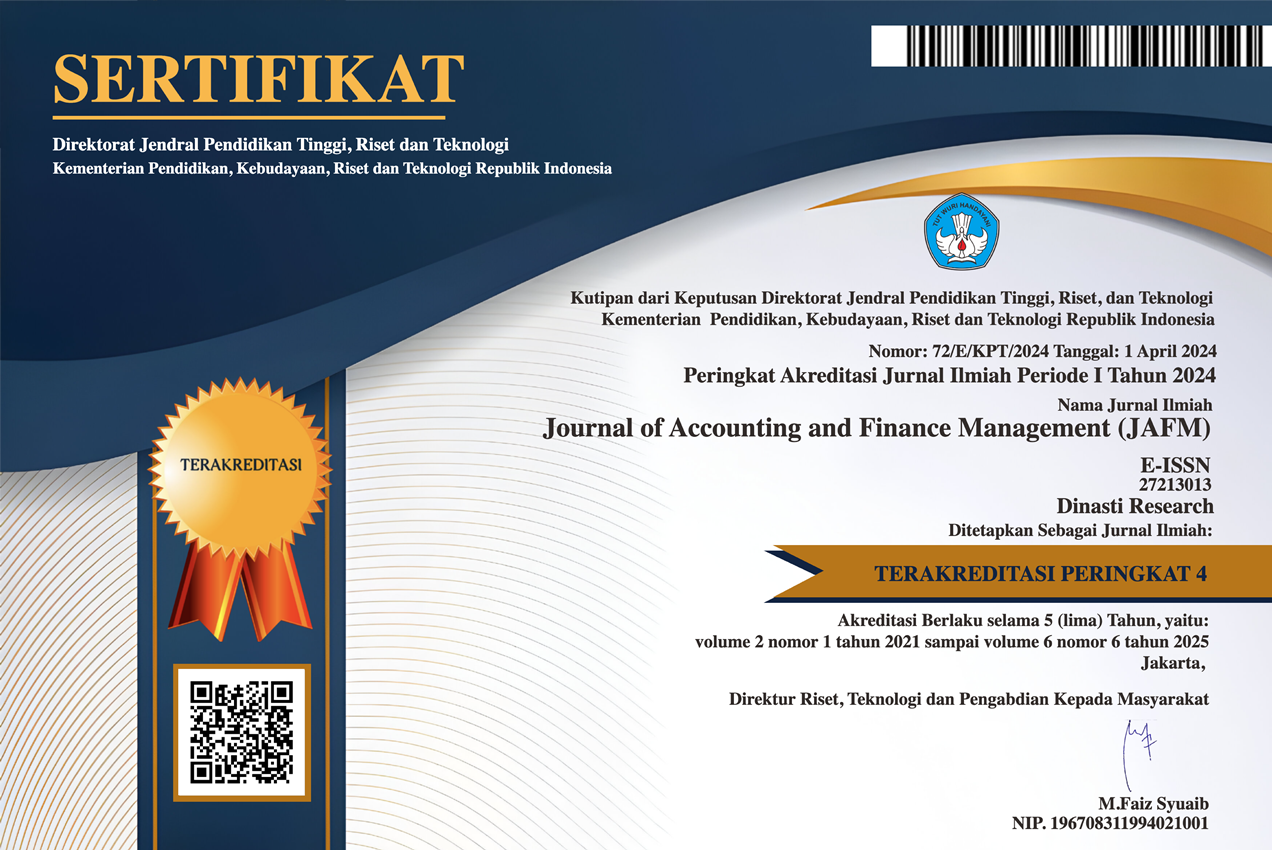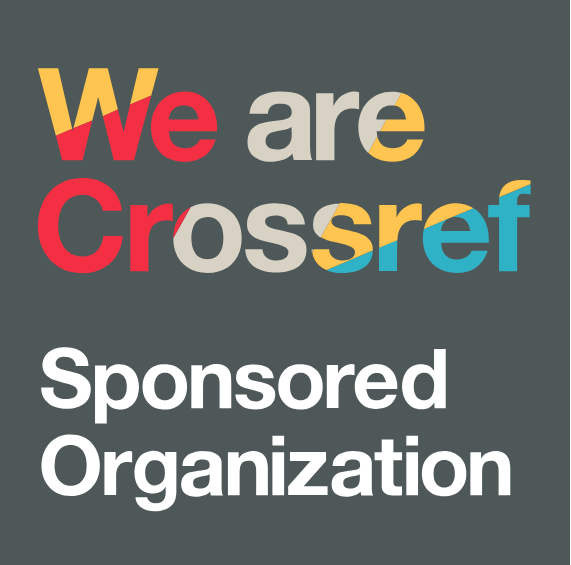Work Self-Efficacy in Strengthening Employee Psychological Well-Being: Systematic Review and Future Direction
DOI:
https://doi.org/10.38035/jafm.v5i6.1495Keywords:
Work Self-Efficacy, Psychological Well-Being, EmployeesAbstract
This study aims to conduct a systematic review of the relationship between work self-efficacy and employee psychological well-being. Although many previous studies have been conducted, there is still a limitation in comprehensive studies on this topic. Using the guidelines of Tranfield et al. (2003), this study identified and analyzed relevant articles from the Scopus database, focusing on the context of psychological well-being. The search results showed that out of 261 articles identified, 63 articles were not relevant and 18 articles were selected for further analysis. The findings indicate that self-efficacy plays an important role in improving employee psychological well-being, as well as identifying research gaps and future research directions. This study is expected to provide better insight into work self-efficacy and its implications for organizations.
References
Ajayi, O. M., Odusanya, K., & Morton, S. (2017). Stimulating employee ambidexterity and employee engagement in SMEs. Management Decision, 55(4), 662-680.
Al Matrooshi, B., Singh, S. K., & Farouk, S. (2016). Determinants of organizational performance: A proposed framework. International Journal of Productivity and Performance Management, 65(6), 844-859.
Al Mehrzi, N., & Singh, S. K. (2016). Competing through employee engagement: A proposed framework. International Journal of Productivity and Performance Management, 65(6), 831-843.
Anderson, R. (1998). Mid-course correction: Towards a sustainable enterprise: The Interface model. Chelsea Green.
Aiken, L. S., & West, S. G. (1991). Multiple regression: Testing and interpreting interactions. Sage.
Baregheh, A., Rowley, J., & Sambrook, S. (2009). Towards a multidisciplinary definition of innovation. Management Decision, 47(8), 1323-1339.
Bandura, A. (1977). Self-efficacy toward a unified theory of behavioral change. Psychological Review, 84(2), 191-215.
Bandura, A. (1986). Social foundations of thought and action. Prentice Hall.
Bandura, A. (1997). Self-efficacy: The exercise of control. Freeman.
Barlow, J., Wright, C., & Cullen, L. (2002). A job-seeking self-efficacy scale for people with physical disabilities: Preliminary development and psychometric testing. British Journal of Guidance and Counselling, 30(1), 37-53.
Barney, J. (1991). Firm resources and sustained competitive advantage. Journal of Management, 17(1), 99-120.
Baumgartner, J. R. (2009). Organizational culture and leadership: Preconditions for the development of a sustainable corporation. Sustainable Development, 17(2), 102-113.
Betz, N. E., & Klein, K. L. (1996). Relationships among measures of career self-efficacy, general self-efficacy, and global self-esteem. Journal of Career Assessment, 4(3), 285-298.
Bhardwaj, B. R. (2016). Role of green policy on sustainable supply chain management: A model for implementing corporate social responsibility (CSR). Benchmarking: An International Journal, 23(2), 456-468.
Bileviciene, T., & Bileviciute, E. (2015). Influence of employment on strategy of sustainable development implementation. Journal of Security and Sustainability Issues, 4(3S), 520-532.
Bisschop, M. I., Knegsman, D. M. W., Beekman, A. T. F., & Deeg, D. J. H. (2004). Chronic diseases and depression: The modifying role of psychosocial resources. Social Science and Medicine, 59(4), 721-733.
Blackburn, W. R. (2007). The sustainability handbook: The complete management guide to achieving social, economic, and environmental responsibility. Earthscan.
Bozionelos, N., & Singh, S. K. (2017). The relationships of emotional intelligence with task and contextual performance: More than it meets the linear eyes. Personality and Individual Differences, 116, 206-211.
Bozoglan, B., Demirer, V., & Sahin, I. (2013). Loneliness, self-esteem, and life satisfaction as predictors of internet addiction: A cross-sectional study among Turkish university students. Scandinavian Journal of Psychology, 54(4), 313-319.
Bui, J., Hodge, A., Shackelford, A., & Acsell, J. (2011). Factors contributing to burnout among percussionists in the US. Perfusion, 26(6), 461-466.
Cakar, F. S. (2012). The relationship between the self-efficacy and life satisfaction of young adults. International Education Studies, 5(6), 123-130.
Campbell, A., Converse, S. E., & Rodgers, W. L. (1976). The quality of American life. Russell Sage Foundation.
Caprara, G. V. (2002). Personality psychology: Filling the gap between basic processes and molar functioning. In C. von Hofsten & L. Bakman (Eds.), Psychology at the Turn of the Millennium: Social, Developmental and Clinical Perspectives (Vol. 2, pp. 201-224). Psychology Press.
Diener, E. (2000). Subjective well-being: The science of happiness and a proposal for a national index. American Psychologist, 55(1), 34-43.
Diener, E., & Diener, C. (1996). Most people are happy. Psychological Science, 7(3), 181-185.
Diener, E., Sandvic, E., & Pavot, W. (1989). Happiness is the frequency not intensity of positive versus negative affect. In E. Sttrack, M. Argyle, & N. Schway (Eds.), The Social Psychology of Subjective Well-Being (pp. 213-231). Pergamon Press.
Diener, E., Suh, E. M., Lucas, R., & Smith, H. (1999). Subjective well-being: Three decades of progress. Psychological Bulletin, 125(2), 276-302.
Ehnert, I. (2006). Sustainability issues in human resource management: Linkages, theoretical approaches, and outlines for an emerging field. Paper presented at the 21st EIASM Workshop on SHRM, Birmingham.
ElBardissi, A. W., & Sundt, T. M. (2012). Human factors and operating room safety. Surgical Clinics of North America, 92(1), 21-35.
Eroglu, S. (2012). Examination of university students' subjective well-being: A cross-cultural comparison. International Journal of Academic Research, 4(1), 168-171.
Esty, D. C., & Winston, A. S. (2006). Green to gold: How smart companies use environmental strategy to innovate, create value, and build competitive advantage. Reed Elsevier.
Fairfield, K. D., Harmon, J., & Behson, S. J. (2011). Influences on the organizational implementation of sustainability: An integrative model. Organization Management Journal, 8(1), 4-20.
Faure, S., & Loxton, H. (2003). Anxiety, depression, and self-efficacy levels of women undergoing first trimester abortion. South African Journal of Psychology, 33(1), 28-38.
Ferdousi, F., Baird, K., Munir, R., & Su, S. (2018). Associations between organizational factors, TQM and competitive advantage: Evidence from an emerging economy. Benchmarking: An International Journal, 25(3), 854-873.
Flin, R. O., Connor, P., & Crichton, M. (2008). Safety at the sharp end: A guide to non-technical skills. Ashgate Publishing.
Government of India Corporate Affairs Department. (2011). National voluntary guidelines on social, environmental, and economic responsibilities of business (NVGs). Retrieved from www.mca.gov.in/Ministry/latestnews/National_Voluntary_Guidelines_2011_12jul2011.pdf
Govindan, K., Sarkis, J., Jabbour, C. J. C., Zhu, Q., & Geng, Y. (2014). Eco-efficiency based green supply chain management: Current status and opportunities. European Journal of Operations Research, 233(2), 293-298.
Hayes, A. F., & Matthes, J. (2009). Computational procedures for probing interactions in OLS and logistic regression: SPSS and SAS implementations. Behavior Research Methods, 41(3), 924-936.
Hyett, M. P., & Parker, G. B. (2015). Further examination of the properties of the Workplace Well-Being Questionnaire (WWQ). Social Indicator Research, 124(2), 683-692.
Iverson, R. D., & Maguire, C. (2000). The relationship between job and life satisfaction: Evidence from a remote mining community. Human Relations, 53(6), 807-839.
Jabbour, C. J. C., & Jabbour, A. B. L. S. (2016). Green human resource management and green supply chain management: Linking two emerging agendas. Journal of Cleaner Production, 112(3), 1824-1833.
Jabbour, C. J. C., & Santos, F. C. A. (2008). Relationships between human resource dimensions and environmental management in companies: Proposal of a model. Journal of Cleaner Production, 16(1), 51-58.
Jabbour, C. J. C., Santos, F. C. A., & Nagano, M. S. (2010). Contributions of HRM throughout the stages of environmental management: Methodological triangulation applied to companies in Brazil. International Journal of Human Resource Management, 21(7), 1049-1089.
Kaptanoglu, A. Y., & Demir, T. (2013). Examining job satisfaction among perfusionists: A brief report from Istanbul. Journal of the Pakistan Medical Association, 63(9), 1157-1162.
Kashdan, T. B., & Roberts, J. E. (2004). Social anxiety’s impact on affect, curiosity, and social self-efficacy during a high self-focus social threat situation. Cognitive Therapy and Research, 28(1), 119-141.
Kattman, B., Corbin, T. P., Moore, L. E., & Walsh, L. (2012). Visual workplace practices positively impact business processes. Benchmarking: An International Journal, 19(3), 412-430.
Kuijer, R. G., & Ridder, D. (2003). Discrepancy in illness-related goals and quality of life in chronically ill patients: The role of self-efficacy. Psychology and Health, 18(3), 313-330.
Kumar, K., Boesso, G., Favotto, F., & Menini, A. (2012). Strategic orientation, innovation patterns and performances of SMEs and large companies. Journal of Small Business and Enterprise Development, 19(1), 132-145.
Downloads
Published
How to Cite
Issue
Section
License
Copyright (c) 2025 Wahyu Irsyaadan Azhar, Fiona Niska Dinda Nadia

This work is licensed under a Creative Commons Attribution 4.0 International License.
Authors who publish their manuscripts in this journal agree to the following conditions:
- The copyright on each article belongs to the author(s).
- The author acknowledges that the Journal of Accounting and Finance Management (JAFM) has the right to be the first to publish with a Creative Commons Attribution 4.0 International license (Attribution 4.0 International (CC BY 4.0).
- Authors can submit articles separately, arrange for the non-exclusive distribution of manuscripts that have been published in this journal into other versions (e.g., sent to the author's institutional repository, publication into books, etc.), by acknowledging that the manuscript has been published for the first time in the Journal of Accounting and Finance Management (JAFM).



























